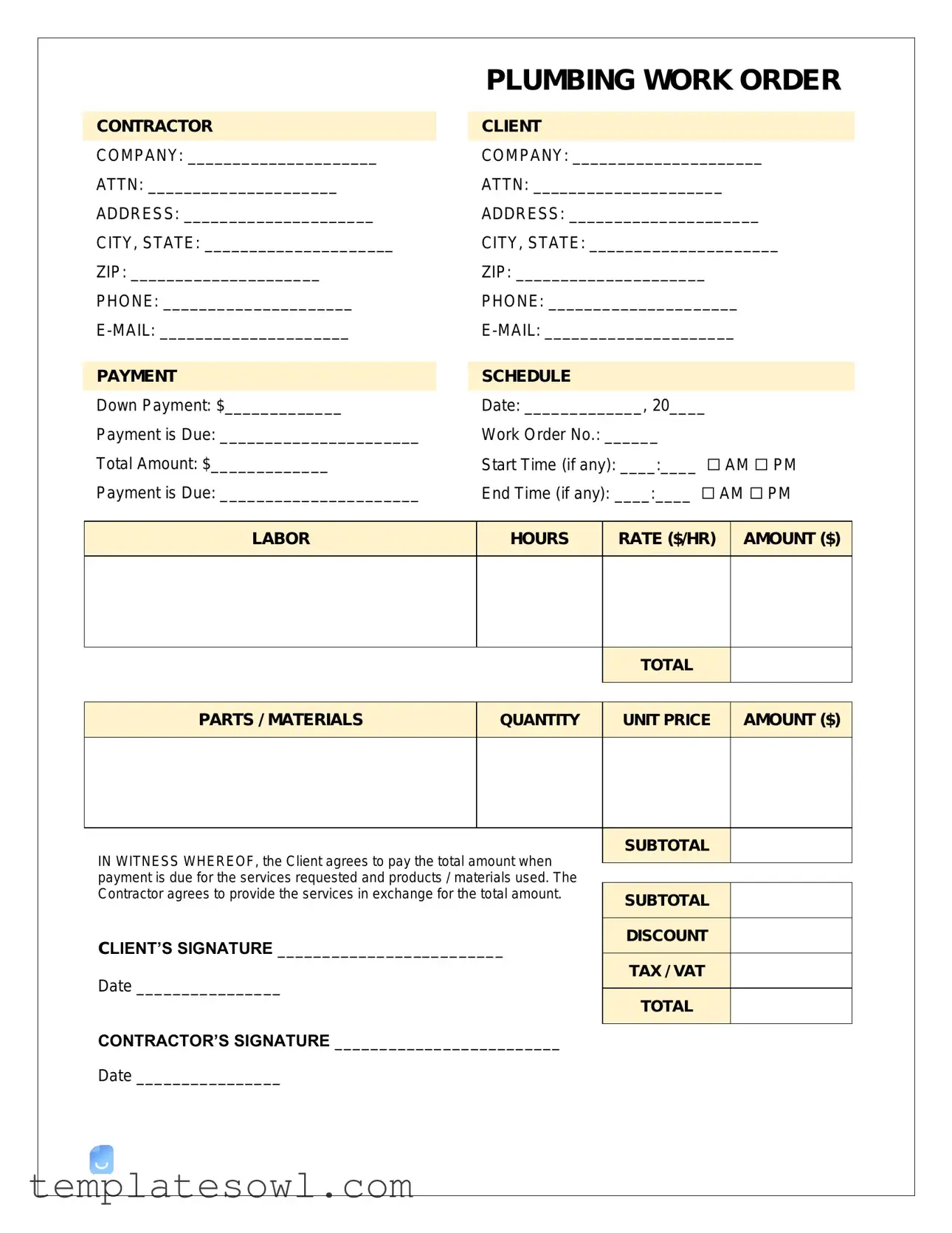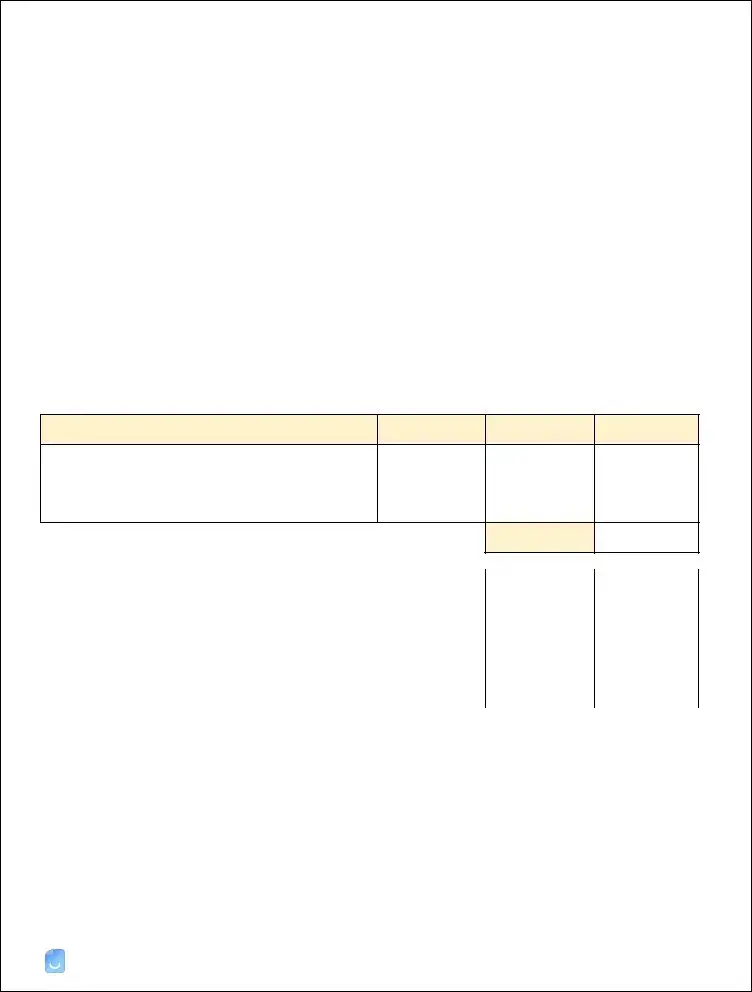What is a Plumbing Work Order form?
The Plumbing Work Order form is a document used to outline the details of plumbing services to be rendered. It captures essential information such as the contractor’s and client's details, payment terms, and a breakdown of labor and material costs. This form serves as a contract that ensures both parties understand the scope of work and financial commitments involved.
How do I fill out the Plumbing Work Order form?
Filling out the Plumbing Work Order form involves several key steps. Begin by entering the contractor's and client's company information, ensuring names, addresses, and contact details are accurate. Specify the payment schedule, including down payment and total amount due. Include details of the job such as start and end times, labor hours, and materials required. Finally, both parties should sign and date the form to confirm agreement to the terms outlined.
What should I do if there are changes to the work or costs after the form is signed?
If changes arise after signing the form, communication is crucial. Both the contractor and client should discuss and agree on any modifications. It’s advisable to document these changes in writing, potentially as an addendum to the original work order. This approach helps maintain a clear record and ensures that both parties are aligned on the new terms and any additional costs.
What happens if I fail to make a payment due as specified in the form?
Failure to make a payment as outlined in the Plumbing Work Order form may lead to various consequences. The contractor has the right to stop work or request additional fees if payments are late. It’s essential to communicate with the contractor if there are any issues with payment so that alternative arrangements can be discussed. Delaying payment can also affect your relationship with the contractor and your ability to receive services in the future.
Is a signature required on the Plumbing Work Order form?
Yes, signatures from both the client and contractor are essential on the Plumbing Work Order form. These signatures indicate that both parties have read, understood, and agreed to the terms laid out in the document. Having signed documentation can provide legal protection should any disputes arise in the future.
Can the Plumbing Work Order form be modified after it's signed?
While any modifications to the original Plumbing Work Order form can technically be made, they should be conducted carefully. Both parties must consent to changes, and it is best to document amendments in writing to avoid misunderstandings. This can be done via an addendum or a new form that outlines the altered terms.
What should I do if I have questions about the Plumbing Work Order form?
If questions or concerns arise regarding the Plumbing Work Order form, it is advisable to address them before signing. Consider reaching out to the contractor for clarification on any terms or details. Additionally, consulting with a legal professional or a knowledgeable third party can provide further guidance and ensure that you fully understand your obligations.

